Bosch KDN 46VI25U, KDN 46VW25U User Manual
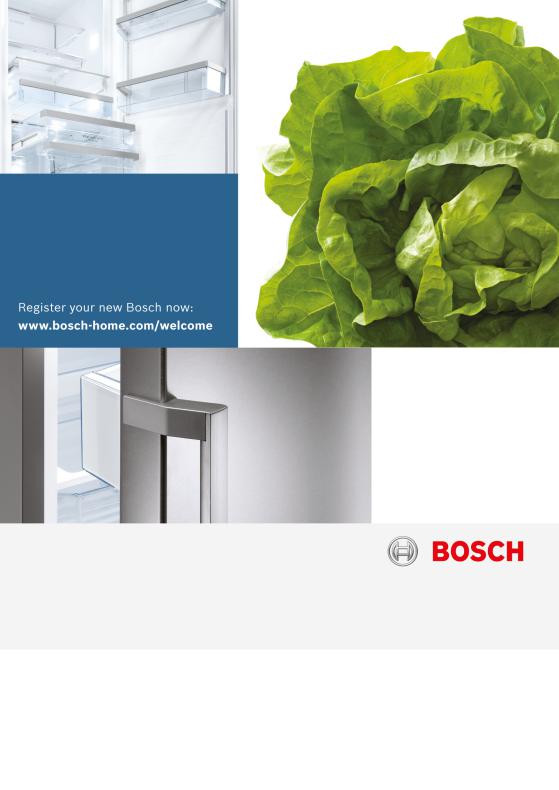
Fridge-freezer Холодильно-морозильная комбинация Sovutgich-Muzlatgich
KDN
en |
Instruction for Use |
ru |
Инcтpyкция пo экcплyaтaции |
uz |
Foydalanish bo'yicha yo'riqnoma |
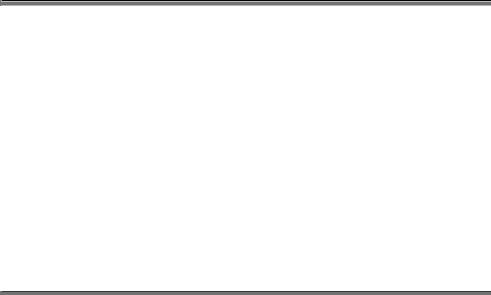
en Table of Contents |
|
Safety and warning information ............ |
4 |
Information concerning disposal .......... |
7 |
Scope of delivery .................................... |
7 |
Ambient temperature and ventilation .. |
8 |
Connecting the appliance ..................... |
8 |
Getting to know your appliance ........... |
9 |
Switching the appliance on ................ |
10 |
Setting the temperature ...................... |
10 |
Energy saving mode ........................... |
11 |
Alarm function ...................................... |
11 |
Usable capacity .................................... |
12 |
Refrigerator compartment .................. |
12 |
Super cooling ....................................... |
13 |
Freezer compartment .......................... |
13 |
Max. freezing capacity ........................ |
14 |
Freezing and storing food .................. |
14 |
Freezing fresh food ............................. |
14 |
Super freezing ...................................... |
15 |
Thawing frozen food ............................ |
16 |
Interior fittings ....................................... |
16 |
Sticker “OK” .......................................... |
17 |
Switching off and disconnecting |
|
the appliance ........................................ |
17 |
Defrosting .............................................. |
17 |
Cleaning the appliance ....................... |
17 |
Light (LED) ............................................ |
18 |
Tips for saving energy ........................ |
18 |
Operating noises ................................. |
19 |
Eliminating minor faults yourself ....... |
19 |
Customer service ................................. |
21 |
ru Coдepжaниe |
|
Укaзaния пo бeзoпacнocти |
|
и пpeдyпpeждeния .............................. |
22 |
Укaзaния пo yтилизaции ................... |
26 |
Oбъeм пocтaвки .................................. |
27 |
Teмпepaтypa oкpyжaющeй cpeды |
|
и вeнтиляция ........................................ |
27 |
Подключение бытового прибора ... |
28 |
Знакомство с бытовым прибором . 29 |
|
Включение бытового прибора ....... |
30 |
Уcтaнoвкa тeмпepaтypы .................... |
31 |
Peжим экoнoмии элeктpoэнepгии . 31 |
|
Предупредительная функция .......... |
32 |
Пoлeзный oбъeм ................................. |
33 |
Xoлoдильнoe oтдeлeниe ................... |
33 |
Cyпepoxлaждeниe .............................. |
35 |
Mopoзильнoe oтдeлeниe .................. |
35 |
Maкc. пpoизвoдитeльнocть |
|
зaмopaживaния ................................... |
35 |
Зaмopaживaниe и xpaнeниe |
|
пpoдyктoв ............................................. |
36 |
Зaмopaживaниe cвeжиx |
|
пpoдyктoв питaния ............................. |
36 |
Cyпepзaмopaживaниe ....................... |
37 |
Paзмopaживaниe пpoдyктoв ............ |
38 |
Cпeциaльнoe ocнaщeниe ................. |
39 |
Haклeйкa «OK» ................................... |
40 |
Bыключeниe прибора и вывoд eгo |
|
из экcплyaтaции ................................. |
40 |
Paзмopaживaниe ................................ |
40 |
Чистка прибора .................................. |
41 |
Ocвeщeниe (нa cвeтoдиoдax) .......... |
41 |
Kaк cэкoнoмить элeктpoэнepгию .. |
42 |
Paбoчиe шyмы ..................................... |
42 |
Caмocтoятeльнoe ycтpaнeниe |
|
мeлкиx нeиcпpaвнocтeй ................... |
43 |
Cлyжбa cepвиca ................................. |
45 |

uz Mundarija |
|
Xavfsizlik va ogohlantirish |
|
ko'rsatmalari .......................................... |
46 |
Utilizasiya qilish bo'yucha |
|
ko'rsatmalar ........................................... |
49 |
Komplekt tarkibi ................................... |
50 |
Xona temperaturasi bilan havo |
|
aylanishini inobatga olish ................... |
50 |
Qurilmani ulash .................................... |
51 |
Qurilma bilan tanishish ....................... |
51 |
Qurilmani yoqish .................................. |
52 |
Temperaturani sozlash ........................ |
53 |
Energiyani tejash rejimi ....................... |
53 |
Signal funksiyasi ................................... |
53 |
Foydali hajmi ......................................... |
54 |
Sovutish kamerasi ................................ |
54 |
Supermuzlatish ..................................... |
56 |
Muzlatish kamerasi .............................. |
56 |
Maks. muzlatish quvvati ..................... |
56 |
Muzlatish va saqlash ........................... |
56 |
Yangi oziq-ovqatlarni muzlatish ......... |
57 |
Supermuzlatish ..................................... |
58 |
Muzlatish mahsulotini eritish .............. |
58 |
Jihozlanish ............................................. |
58 |
”OK” etiketkasi ..................................... |
59 |
Qurilmani o'chirib to'xtatish ................ |
59 |
Eritish ..................................................... |
60 |
Qurilmani tozalash ............................... |
60 |
Chiroq (LED) ......................................... |
60 |
Energieyani tejash ............................... |
61 |
Ish shovqinlari ...................................... |
61 |
Kichik nosozliklarni mustaqil |
|
ravishda bartaraf qilish ....................... |
62 |
Mijozlar xizmati ..................................... |
63 |

en
Safety and warning information
Before you switch ON the appliance
Please read the operating and installation instructions carefully! They contain important information on how to install, use and maintain the appliance.
The manufacturer is not liable if you fail to comply with the instructions and warnings. Retain all documents for subsequent use or for the next owner.
Technical safety
The appliance contains a small quantity of environmentally friendly but flammable refrigerant R600a. Ensure that the tubing of the refrigerant circuit is not damaged during transportation and installation. Leaking refrigerant may cause eye injuries or ignite.
If damage has occurred
■Keep naked flames and/or ignition sources away from the appliance,
■thoroughly ventilate the room for several minutes,
■switch off the appliance and pull out the mains plug,
■ inform customer service.
The more refrigerant an appliance contains, the larger the room must be in which the appliance is situated. Leaking refrigerant can form a flammable gas-air mixture in rooms which are too small. The room must be at least 1 m³ per 8 g of refrigerant. The amount of refrigerant in your appliance is indicated on the
rating plate inside the appliance.
If the power cord of this appliance is damaged, it must be replaced by the manufacturer, customer service or a similarly qualified person. Improper installations
and repairs may put the user at considerable risk.
Repairs may be performed by the manufacturer, customer service or a similarly qualified person only.
Only original parts supplied by the manufacturer may be used. The manufacturer guarantees that only these parts satisfy the safety requirements.
A extension cable may be purchased from customer service only.
4
Important information when using the appliance
■Never use electrical appliances inside the appliance (e.g. heater, electric ice maker, etc.). Explosion hazard!
■Never defrost or clean the appliance with a steam cleaner! The steam may penetrate electrical parts and cause a short-circuit. Risk of electric shock!
■Do not use pointed and sharpedged implements to remove frost or layers of ice. You could damage the refrigerant tubes. Leaking refrigerant may cause eye injuries or ignite.
■Do not store products which contain flammable propellants (e.g. spray cans) or explosive substances in the appliance. Explosion hazard!
■Do not stand on or lean heavily against base
of appliance, drawers or doors, etc
■For cleaning pull out mains plug or switch off fuse. Do not pull out the mains plug by tugging on the power cord.
■Store high-percentage alcohol tightly closed and standing up.
en
■Keep plastic parts and the door seal free of oil and grease. Otherwise, parts and door seal will become porous.
■Never cover or block the ventilation openings of the appliance!
■Avoiding placing children and vulnerable people at risk:
At risk are children, people who have limited physical, mental or sensory abilities, as well as people who have inadequate knowledge concerning safe operation of the appliance.
Ensure that children and vulnerable people have understood the hazards.
A person responsible for safety must supervise or instruct children and vulnerable people who are using the appliance.
Only children from 8 years and above may use the appliance.
Supervise children who are cleaning and maintaining the appliance.
Never allow children to play with the appliance.
5
en
■Do not store bottled or canned drinks (especially carbonated drinks) in the freezer compartment. Bottles and cans may burst!
■Never put frozen food straight from the freezer compartment into your mouth.
Risk of low-temperature burns!
■Avoid prolonged touching of frozen food, ice or the evaporator pipes, etc.
Risk of low-temperature burns!
Children in the household
■Keep children away from packaging and its parts. Danger of suffocation from folding cartons and plastic film!
■Do not allow children to play with the appliance!
■If the appliance features a lock:
keep the key out of the reach of children!
General regulations
The appliance is suitable
■for refrigerating and freezing food,
■for making ice,
■for dispensing drinking water.
This appliance is intended for use in the home and the home environment.
The appliance is suppressed according to EU Directive 2004/ 108/EC.
The refrigeration circuit has been checked for leaks.
This product complies with the relevant safety regulations for electrical appliances
(EN 60335-2-24).
This appliance is intended for use up to a maximum height of 2000 metres above sea level.
6
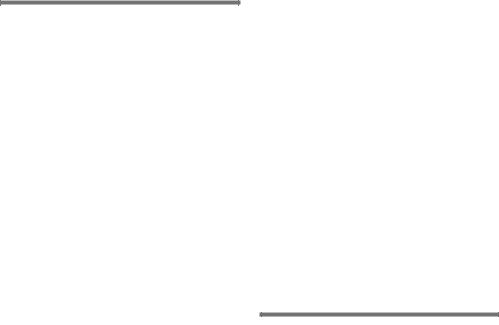
Information concerning disposal
* Disposal of packaging
The packaging protects your appliance from damage during transit. All utilised materials are environmentally safe and recyclable. Please help us by disposing of the packaging in an environmentally friendly manner.
Please ask your dealer or inquire at your local authority about current means of disposal.
* Disposal of your old appliance
Old appliances are not worthless rubbish! Valuable raw materials can be reclaimed by recycling old appliances.
This appliance is labelled in
accordance with European Directive 2012/19/EU concerning used electrical and electronic appliances (waste electrical and electronic equipment - WEEE). The guideline determines the framework for the return and recycling of used appliances as applicable throughout the EU.
en
m Warning
Redundant appliances
1.Pull out the mains plug.
2.Cut off the power cord and discard with the mains plug.
3.Do not take out the trays and receptacles: children are
therefore prevented from climbing in!
4.Do not allow children to play with the appliance once it has spent its useful life. Danger of suffocation!
Refrigerators contain refrigerant
and gases in the insulation. Refrigerant and gases must be disposed
of professionally. Ensure that tubing
of the refrigerant circuit is not damaged prior to proper disposal.
Scope of delivery
After unpacking all parts, check for any damage in transit.
If you have any complaints, please contact the dealer from whom you purchased the appliance or our customer service.
The delivery consists of the following parts:
■Free-standing appliance
■Interior fittings (depending on model)
■Bag containing installation materials
■Operating instructions
■Installation manual
■Customer service booklet
■Warranty enclosure
■Information on the energy consumption and noises
7

en
Ambient temperature and ventilation
Ambient temperature
The appliance is designed for a specific climate class. Depending on the climate class, the appliance can be operated at the following temperatures.
The climate class can be found on the rating plate. Fig. *
Climate class |
Permitted ambient |
|
temperature |
SN |
+10 °C to 32 °C |
N |
+16 °C to 32 °C |
ST |
+16 °C to 38 °C |
T |
+16 °C to 43 °C |
Note
The appliance is fully functional within the room temperature limits
of the indicated climatic class. If an appliance of climatic class SN
is operated at colder room temperatures, the appliance will not be damaged up to a temperature of +5 °C.
Ventilation
Fig. #
The air on the rear panel and on the side panels of the appliance heats up. Conduction of the heated air must
not be obstructed. Otherwise,
the refrigerating unit must work harder. This increases power consumption. Therefore: Never cover or block
the ventilation openings!
Connecting the appliance
After installing the appliance, wait at least 1 hour until the appliance is switched on. During transportation the oil in
the compressor may have flowed into the refrigeration system.
Before switching on the appliance for the first time, clean the interior of
the appliance (see chapter “Cleaning the appliance”).
Electrical connection
The socket must be near the appliance and also freely accessible following installation of the appliance.
The appliance complies with the protection class I. Connect the appliance to 220–240 V/50 Hz alternating current via a correctly installed socket with protective conductor. The socket must be fused with a 10 to 16 A fuse.
For appliances operated in nonEuropean countries, check whether the stated voltage and current type match the values of your mains supply. This information can be found on the rating plate. Fig. *
m Warning
Never connect the appliance
to electronic energy saver plugs.
Our appliances can be used with mains and sine-controlled inverters. Mainscontrolled inverters are used
for photovoltaic systems which
are connected directly to the national grid. Sine-controlled inverters must be used for isolated applications (e.g. on ships or in mountain lodges) which are not connected directly to the national grid.
8
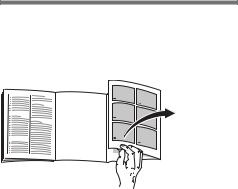
Getting to know your appliance
Please fold out the illustrated last page. These operating instructions refer
to several models.
The features of the models may vary. The diagrams may differ.
Fig. !
* Not all models.
1-10 Controls
11Light switch
12On/Off button
13* Fast freezer compartment
14Light switch
15Extendable glass shelf
16Air outlet opening
17Light (LED)
18Shelf in the refrigerator compartment
19Cold storage compartment
20Vegetable container
21Height-adjustable feet
22Door shelf
23* Ice maker
24* Ice cube container
25Egg rack
26Door shelf
27Shelf for large bottles
AFreezer compartment
BRefrigerator compartment
en
Controls
Fig. "
1Temperature display freezer
compartment
The numbers correspond
to the set freezer compartment temperatures in °C.
2Display super freezing
Illuminates when super freezing is on.
3Temperature display refrigerator
compartment
The numbers correspond to the set refrigerator compartment temperatures in °C.
4“super” display
Illuminates, if the super cooling is in operation.
5Alarm button
Used to switch off the warning signal, see chapter “Alarm function”.
6Energy saving mode display
It is lit when the appliance is not in use.
7Temperature selection buttons freezer compartment
These buttons set
the temperature in the freezer compartment.
8“Super” button (freezer compartment)
Switches super freezing on and off.
9Temperature selection buttons refrigerator compartment
These buttons set
the temperature in the refrigerator compartment.
10“Super” button refrigerator
compartment
Switches super cooling on and off.
9

en
Switching
the appliance on
Fig. "
Switch on the appliance with the On/Off button !/12.
A warning signal sounds.
The temperature display 1 flashes and the alarm display 5 is lit.
Press the “alarm” button 5. The warning signal switches off and the temperature display 1 stops flashing.
Display alarm goes out when
the appliance has reached the set temperature.
The factory has recommended the following temperatures:
■Refrigerator compartment: +4 °C
■Freezer compartment: –18 °C
Operating tips
■When the appliance has been switched on, it may take several hours until the set temperatures have been reached.
■The fully automatic NoFrost system ensures that the freezer compartment remains free of ice. Defrosting is no longer required.
■The sides of the housing are sometimes heated slightly. This prevents condensation in the area of the door seal.
■If the freezer compartment door cannot be immediately re-opened after it has been closed, wait until the resulting low pressure has equalised.
Setting
the temperature
Fig. "
Refrigerator compartment
The temperature can be set from +2 °C to +8 °C.
Keep pressing temperature setting button 9 until the required refrigerator compartment temperature is set.
The value last selected is saved. The set temperature is indicated on temperature display 3.
We recommend a factory setting
of +4 °C in the refrigerator compartment.
Perishable food should not be stored above +4 °C.
Freezer compartment
The temperature can be set from -16 °C to -24 °C.
Keep pressing temperature setting button 7 until the required freezer compartment temperature is set.
The value last selected is saved. The set temperature is indicated on temperature display 1.
10

Energy saving mode
When the appliance is not used, the display on the controls switches to energy saving mode.
■Energy saving mode display, Fig. "/ 6, illuminates.
■The luminosity of the temperature displays is reduced.
■When the “Super” function is switched on, the corresponding super display is lit (Super cooling display, Fig. "/4 or Super freezing display, Fig. "/2).
As soon as you operate the appliance, e.g. open door or press any button, the display switches to normal illumination.
Alarm function
In the following cases an alarm may be actuated.
Door opening alarm
The door alarm (continuous sound) switches on and the Alarm "/5 display is lit if the appliance is left open for too long. Close the appliance to switch off the door alarm.
en
Temperature alarm
The temperature alarm switches on
if the freezer compartment is too warm and the frozen food is at risk of thawing.
The temperature display 1 flashes and the alarm button 5 is lit.
When the alarm button 5 is pressed, the temperature display 1 indicates for five seconds the warmest temperature reached in the freezer compartment.
Then this value is deleted and
the temperature display 1 indicates the set temperature.
The alarm may switch on without any risk to the frozen food
■when the appliance is switched on,
■when large quantities of fresh food are placed in the appliance,
■if the freezer compartment door is open too long.
Note
Do not refreeze thawing or thawed food. Only ready meals (boiled or fried) may be refrozen.
No longer store the frozen produce for the max. storage period.
Switching off the alarm
Fig. "
Press the alarm button 5 to switch off the warning signal.
11
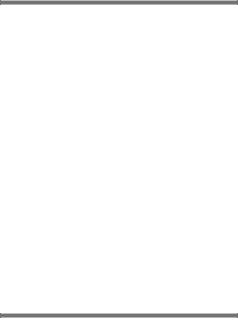
en
Usable capacity
Information on the usable capacity can be found inside your appliance on
the rating plate. Fig. *
Fully utilising the freezer volume
The maximum amount of food can be placed in the freezer by removing the following fittings.
Removing the fittings
■The door shelf can be taken out. Fig. (
■If appliances feature an ice maker, the latter can be taken out. Fig. &
Refrigerator compartment
The refrigerator compartment is the ideal storage location for meat, sausage, fish, dairy products, eggs, ready meals
and pastries.
Storing food
■Store fresh, undamaged food. The quality and freshness will then
be retained for longer.
■In the case of ready-made products and bottled goods, observe the bestbefore date or use-by date specified by the manufacturer.
■To retain aroma, colour
and freshness, pack or cover food well before placing in the appliance. This will prevent the transfer
of flavours and the discolouration of plastic parts in the refrigerator compartment.
■Allow warm food and drinks to cool down before placing in the appliance.
Note
Avoid contact between food and rear panel. Otherwise the air circulation will be impaired.
Food or packaging could freeze to the rear panel.
Note the chill zones in the refrigerator compartment
The air circulation in the refrigerator compartment creates different chill zones:
■Coldest zone
is on the rear panel inside
the appliance and in the chiller container. Fig. !/19
Note
Store perishable food e.g. fish, sausage, meat in the coldest zones.
■Warmest zone
is at the very top of the door.
Note
Store e.g. hard cheese and butter
in the warmest zone. Cheese can then continue to release its flavour and the butter will still be easy to spread.
12
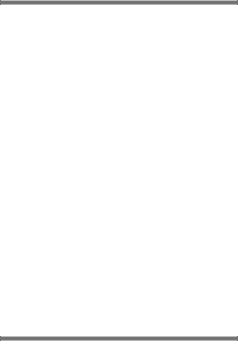
Vegetable container with humidity controller
Fig. $
To create the optimum storage climate for fruit and vegetables, you can set the air humidity in the vegetable container depending on the quantity stored:
■smaller quantities of fruit and vegetables – high air humidity
■large quantities of fruit and vegetables
– low air humidity
Notes
■Fruit sensitive to cold (e.g. pineapple, banana, papaya and citrus fruit) and vegetables sensitive to cold (e.g. aubergines, cucumbers, zucchini, peppers, tomatoes and potatoes) should be stored outside
the refrigerator at temperatures of approx. +8 °C to +12 °C for
optimum preservation of quality and flavour.
■Condensation may form in the vegetable container depending on the type and quantity of products stored. Remove condensation with a dry cloth and adjust air humidity in the vegetable container with the humidity controller.
Chiller container
Fig. !/19
Temperatures in the chiller container are lower than in the refrigerator compartment. Even temperatures below 0 °C may occur.
Ideal for storing fish, meat and sausage. Not suitable for lettuce, vegetables
and produce sensitive to cold.
en
Super cooling
Super cooling sets the refrigerator temperature to the coldest temperature setting for approx. 6 hours. Then
the appliance automatically switches to the temperature set prior to super cooling mode.
Switch on super cooling mode, e.g.
■before placing large quantities of food in the refrigerator compartment.
■for the fast cooling of drinks.
Switching on and off
Fig. "
Press “super” button 10.
The button is lit when super cooling is switched on.
Freezer compartment
Use the freezer compartment
■To store deep-frozen food.
■To make ice cubes.
■To freeze food.
Note
Ensure that the freezer compartment door has been closed properly. If the door is open, the frozen food will thaw. The freezer compartment will
become covered in thick ice. Also: waste of energy due to high power consumption!
13

en
Max. freezing capacity
Information about the max. freezing capacity within 24 hours can be found on the rating plate. Fig. *
Freezing and storing food
Purchasing frozen food
■Packaging must not be damaged.
■Use by the “use by” date.
■Temperature in the supermarket freezer must be -18 °C or lower.
■If possible, transport deep-frozen food in an insulated bag and place quickly in the freezer compartment.
Note when loading products
Freeze large quantities of food in the fast freezer compartment where food freezes particularly quickly and therefore also gently.
Food which is already frozen must not come into contact with the food which is to be frozen.
Freezing fresh food
Freeze fresh and undamaged food only.
To retain the best possible nutritional value, flavour and colour, vegetables should be blanched before freezing. Aubergines, peppers, zucchini and asparagus do not require blanching.
Literature on freezing and blanching can be found in bookshops.
Note
Keep food which is to be frozen away from food which is already frozen.
■The following foods are suitable for freezing:
Cakes and pastries, fish and seafood, meat, game, poultry, vegetables, fruit, herbs, eggs without shells, dairy products such as cheese, butter and quark, ready meals and leftovers such as soups, stews, cooked meat and fish, potato dishes, soufflés and desserts.
■The following foods are not suitable for freezing:
Types of vegetables, which are usually consumed raw, such as lettuce or radishes, eggs in shells, grapes, whole apples, pears and peaches, hard-boiled eggs, yoghurt, soured milk, sour cream, crème fraîche and mayonnaise.
14

Packing frozen food
To prevent food from losing its flavour or drying out, place in airtight containers.
1.Place food in packaging.
2.Remove air.
3.Seal the wrapping.
4.Label packaging with contents and date of freezing.
Suitable packaging:
Plastic film, tubular film
made of polyethylene, aluminium foil, freezer containers.
These products are available from specialist outlets.
Unsuitable packaging:
Wrapping paper, greaseproof paper, cellophane, bin liners and used shopping bags.
Items suitable for sealing packaged food:
Rubber bands, plastic clips, string, coldresistant adhesive tape, etc.
Bags and tubular film
made of polyethylene can be sealed with a film heat sealer.
Shelf life of frozen food
Storage duration depends on the type of food.
At a temperature of -18 °C:
■Fish, sausage, ready meals and cakes and pastries:
up to 6 months
■Cheese, poultry and meat: up to 8 months
■Vegetables and fruit: up to 12 months
en
Super freezing
Food should be frozen solid as quickly as possible in order to retain vitamins, nutritional value, appearance and flavour.
Several hours before placing fresh food in the freezer compartment, switch on super freezing to prevent an unwanted temperature rise.
As a rule, 4–6 hours is adequate.
This appliance runs constantly
and the freezer compartment drops to a very low temperature.
If the max. freezing capacity is to be used, super freezing must be switched on for 24 hours before the fresh produce is placed in the freezer compartment.
Smaller quantities of food (up to 2 kg) can be frozen without “super freezing”.
Note
When super freezing is switched on, increased operating noises may occur.
Switching on and off
Fig. "
Press “super” button 8.
If the super freezing has been switched on the button is lit.
Super freezing automatically switches off after approx. 2½ days.
15
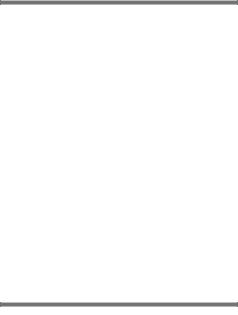
en
Thawing frozen food
Depending on the type and application, select one of the following options:
■at room temperature
■in the refrigerator
■in an electric oven, with/without fan assisted hot-air
■in the microwave
m Caution
Do not refreeze thawing or thawed food. Only ready meals (boiled or fried) may be refrozen.
No longer store the frozen produce for the max. storage period.
Interior fittings
You can reposition the shelves inside the appliance and the door shelves as required:
■Pull shelf forwards, lower and swing out to the side.
■Raise the door shelf and remove.
Special features
(not all models)
Taking out the extendable glass shelf
Fig. !/15
The glass shelf can be removed for cleaning. To do this, pull out shelf, lift at the front and take out.
Bottle shelf
Fig. ' A/B
Bottles can be stored securely on the bottle shelf.
Ice maker
Fig. %
1.Take out water container and fill with water up to the mark.
2.Carefully empty water into the storage container via the filler opening. Ensure that the water does not run into or splash onto the storage container. Otherwise, ice cubes could freeze to each other or to the container.
3.When the ice cubes are frozen, press lever down and release.
The ice cubes loosen and fall into the storage container.
4.Remove ice cubes from the storage container. The ice cubes should be removed regularly from the storage container to prevent them from freezing to each other.
Ice cube tray
Fill the ice cube tray ¾ full of drinking water and place in the freezer compartment.
If the ice tray is stuck to the freezer compartment, loosen with a blunt implement only (spoon-handle).
To loosen the ice cubes, twist the ice tray slightly or hold briefly under flowing water.
16
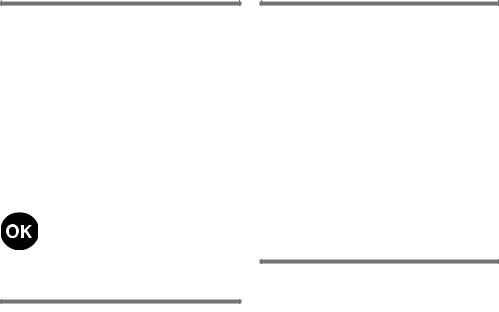
Sticker “OK”
(not all models)
The “OK” temperature monitor
can be used to determine temperatures below +4 °C. Gradually reduce
the temperature if the sticker does not indicate “OK”.
Note
When the appliance is switched on, it may take 12 hours until
the temperature is reached.
Correct setting
Switching off and disconnecting the appliance
Switching off the appliance
Fig. !
Press the On/Off button 12. Refrigerating unit and light switch off.
Disconnecting the appliance
If you do not use the appliance for a prolonged period:
1.Switch off the appliance.
2.Pull out mains plug or switch off fuse.
3.Clean the appliance.
4.Leave the appliance door open.
en
Defrosting
Refrigerator compartment
Defrosting is actuated automatically.
The condensation runs through
the drainage hole into an evaporation pan on the rear of the appliance.
Freezer compartment
The fully automatic NoFrost system ensures that the freezer compartment remains free of ice. Defrosting is no longer required.
Cleaning the appliance
m Caution
■Do not use abrasive, chloride or acidic cleaning agents or solvents.
■Do not use scouring or abrasive sponges.
The metallic surfaces could corrode.
■Never clean shelves and containers in the dishwasher.
The parts may become deformed!
Water used for cleaning must not drip into the
■slots in the front base area in the freezer compartment,
■controls,
■and light.
17
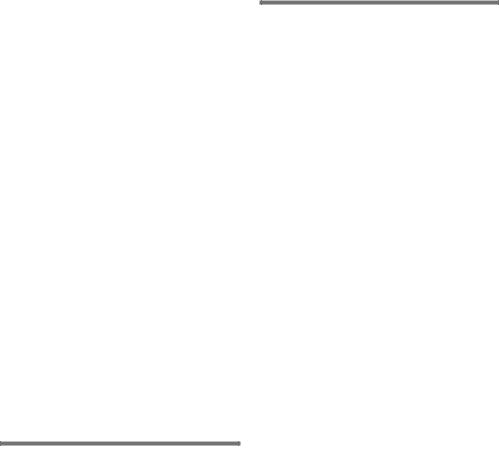
en
Proceed as follows:
1.Before cleaning: Switch off the appliance.
2.Pull out mains plug or switch off fuse.
3.Take out the frozen food and store in a cool location. Place the ice pack (if enclosed) on the food.
4.Wait until the layer of frost has thawed.
5.Clean the appliance with a soft cloth, lukewarm water and a little pH neutral washing-up liquid. The rinsing water must not run into the light.
6.Wipe the door seal with clear water only and then wipe dry thoroughly.
7.After cleaning reconnect and switch the appliance back on.
8.Put the frozen food back into the appliance.
Interior fittings
All variable parts of the appliance can be taken out for cleaning.
Take out glass shelves
Pull the glass shelves forwards and take out.
Light (LED)
Your appliance features a maintenancefree LED light.
These lights may be repaired
by customer service or authorised technicians only.
Tips for saving energy
■Install the appliance in a dry, well ventilated room! The appliance should not be installed in direct sunlight
or near a heat source (e.g. radiator, cooker).
If required, use an insulating plate.
■Allow warm food and drinks to cool down before placing in the appliance.
■Thaw frozen food in the refrigerator compartment and use the low temperature of the frozen food to cool refrigerated food.
■Open the appliance as briefly as possible.
■To avoid increased power consumption, occasionally clean the back of the appliance.
■If available:
Fit wall spacers to obtain the indicated energy rating of the appliance (see Installation instructions). A reduced wall gap will not restrict the function of the appliance. The energy rating may then increase slightly. The gap of 75 mm must not be exceeded.
■The arrangement of the fittings does not affect the energy rating of the appliance.
18
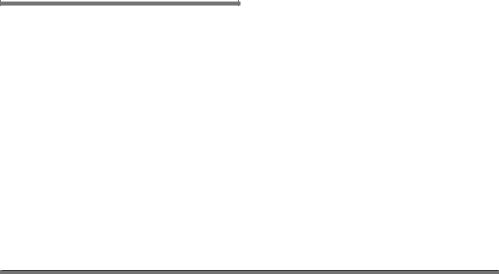
Operating noises
Quite normal noises
Droning
Motors are running (e.g. refrigerating units, fan).
Bubbling, humming or gurgling noises
Refrigerant is flowing through the tubing.
Clicking
Motor, switches or solenoid valves are switching on/off.
Cracking
Automatic defrosting is running.
en
Preventing noises
The appliance is not level
Please align the appliance with a spirit level. Use the height-adjustable feet or place packing underneath them.
The appliance is not free-standing
Please move the appliance away from adjacent units or appliances.
Containers or storage areas wobble or stick
Please check the removable parts and re-insert them correctly if required.
Bottles or receptacles are touching each other
Move the bottles or receptacles slightly away from each other.
Eliminating minor faults yourself
Before you call customer service:
Please check whether you can eliminate the fault yourself based on the following information.
Customer service will charge you for advice – even if the appliance is still under guarantee!
Fault |
Possible cause |
Remedial action |
|
|
|
Temperature differs greatly |
|
In some cases it is adequate to switch off |
from the set value. |
|
the appliance for 5 minutes. |
|
|
If the temperature is too high wait a few hours |
|
|
and check whether the temperature has |
|
|
approached the set value. |
|
|
If the temperature is too low check |
|
|
the temperature again the next day. |
|
|
|
The light does not function. |
The LED light is defective. |
See chapter “Light (LED)” section. |
|
|
|
|
Appliance was open too |
When the appliance is closed and opened, |
|
long. |
the light is on again. |
|
Light is switched off after |
|
|
approx. 10 min. |
|
|
|
|
19

en
Fault |
Possible cause |
Remedial action |
|
|
|
Controls have reduced |
When the appliance is not |
As soon as the appliance is again used, e.g. |
luminosity. |
used for some time, |
the door is opened, the display switches back |
|
the display on the fascia |
to normal illumination. |
|
switches to energy saving |
|
|
mode. |
|
Displays do not illuminate. |
Power failure; the fuse has |
|
been switched off; the mains |
|
plug has not been inserted |
|
properly. |
Connect mains plug. Check whether the power is on, check the fuses.
Warning signal sounds. |
Fault – the freezer |
To switch off the warning signal, press |
|
The alarm button is lit. |
compartment is too warm! |
the alarm button 5. |
|
Fig. "/5 |
|
|
|
Appliance is open. |
Close the appliance. |
||
|
|
|
|
|
Ventilation openings have |
Ensure that there is adequate ventilation. |
|
|
been covered. |
|
|
|
|
|
|
|
Too much food was placed in |
Do not exceed max. freezing capacity. |
|
|
the freezer compartment at |
|
|
|
once. |
|
|
|
|
|
|
|
|
When the fault has been eliminated, the alarm |
|
|
|
button goes out shortly afterwards. |
|
|
|
|
|
The temperature in |
Appliance opened |
Do not open the appliance unnecessarily. |
|
the freezer compartment is |
frequently. |
|
|
too warm. |
|
|
|
The ventilation openings |
Remove obstacles. |
||
|
|||
|
have been covered. |
|
|
|
|
|
|
|
Large quantities of fresh |
Do not exceed max. freezing capacity. |
|
|
food are being frozen. |
|
|
|
|
|
20

|
|
en |
|
|
|
Fault |
Possible cause |
Remedial action |
|
|
|
Freezer compartment door |
The evaporator (refrigeration |
To defrost the evaporator, remove the frozen |
was open for a long time; |
generator) in the NoFrost |
food with the compartments, insulate well |
temperature is no longer |
system is covered in thick ice |
and store in a cool location. |
reached. |
and can no |
Switch off the appliance and move it away |
|
longer be defrosted fully |
|
|
from the wall. Leave the appliance door open. |
|
|
automatically. |
|
|
After approx. 20 min. the condensation begins |
|
|
|
|
|
|
to run into the evaporation pan, |
|
|
at the rear of the appliance. Fig. ) |
|
|
To prevent the evaporation pan |
|
|
from overflowing in this case, |
|
|
mop up the condensation with a sponge. |
|
|
The evaporator is defrosted when the water |
|
|
stops running into the evaporation pan. Clean |
|
|
the interior. Switch the appliance |
|
|
back on again. |
|
|
|
Customer service
Your local customer service
can be found in the telephone directory or in the customer-service index. Please provide customer service
with the appliance product number (E-Nr.) and production number (FD).
These specifications
can be found on the rating plate. Fig. *
To prevent unnecessary call-outs, please assist customer service by quoting
the product and production numbers. This will save you additional costs.
Repair order and advice on faults
Contact information for all countries can be found on the enclosed customer service list.
GB |
0344 892 8979 |
Calls charged at |
|
|
local or mobile rate. |
IE |
01450 2655 |
0.03 € per minute |
|
|
at peak. Off peak |
|
|
0.0088 € per |
|
|
minute. |
US |
800 944 2904 |
toll-free |
21
